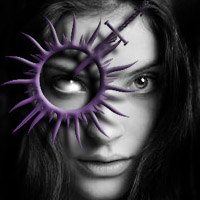|
- Getting Started
- Help
- Master Lists
- Useful Links
- Features
PM to join First Lessons [Leila, Castor and Tsaba]
Professor Marin's first class is in session.
(This is a thread from Mizahar's fantasy role playing forum. Why don't you register today? This message is not shown when you are logged in. Come roleplay with us, it's fun!)
35 posts • Page 4 of 4 • 1, 2, 3, 4
First Lessons [Leila, Castor and Tsaba]
Always open for a thread! Feel free to PM me!
Mailbox
Mailbox
-

Castor Riley - Player
- Posts: 224
- Words: 127927
- Joined roleplay: April 23rd, 2013, 11:59 pm
- Location: Zeltiva
- Race: Human
- Character sheet
- Storyteller secrets
First Lessons [Leila, Castor and Tsaba]
-

Annalisa Marin - Sorceress of Chaos
- Posts: 1479
- Words: 1635951
- Joined roleplay: May 19th, 2013, 6:52 pm
- Location: Nyka
- Race: Human
- Character sheet
- Storyteller secrets
- Scrapbook
- Journal
- Plotnotes
- Medals: 3
-


-

First Lessons [Leila, Castor and Tsaba]
Thanks to Abstract for the lovely boxcode!
- Tsaba
- Player
- Posts: 367
- Words: 200581
- Joined roleplay: May 26th, 2013, 10:57 am
- Race: Nuit
- Character sheet
- Storyteller secrets
- Plotnotes
- Medals: 2
-


First Lessons [Leila, Castor and Tsaba]
Always open for a thread! Feel free to PM me!
Mailbox
Mailbox
-

Castor Riley - Player
- Posts: 224
- Words: 127927
- Joined roleplay: April 23rd, 2013, 11:59 pm
- Location: Zeltiva
- Race: Human
- Character sheet
- Storyteller secrets
First Lessons [Leila, Castor and Tsaba]
Starting Guide | Zeltiva | Zeltiva Player's Guide | Staff and Request Thread

Office| Scrapbook
A big thanks to Coltyn/Banickle for the wonderful signature!
Office| Scrapbook
A big thanks to Coltyn/Banickle for the wonderful signature!
35 posts • Page 4 of 4 • 1, 2, 3, 4
Who is online
Users browsing this forum: No registered users and 0 guests
